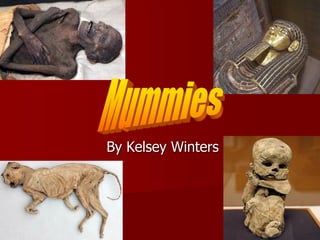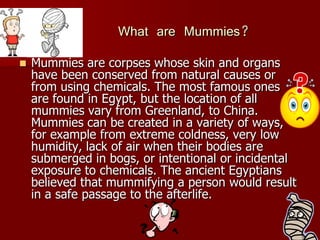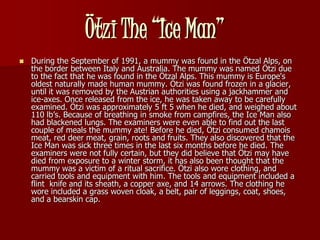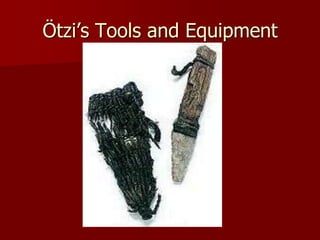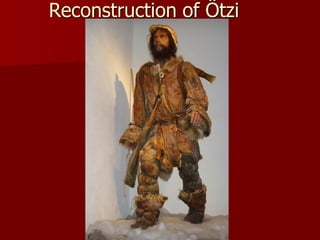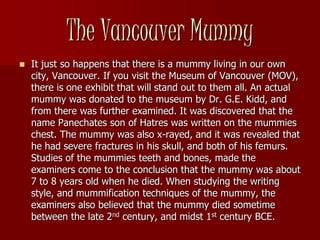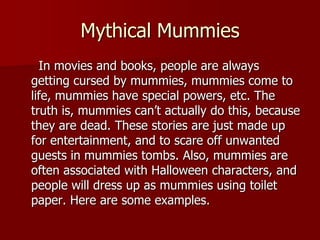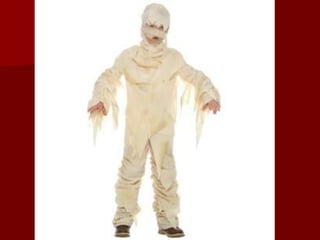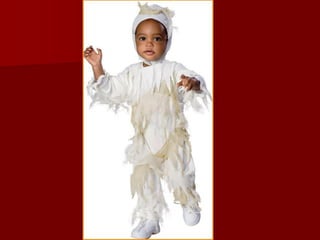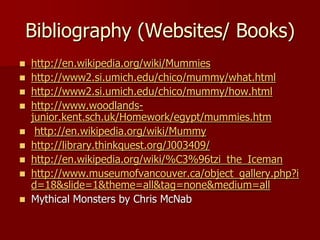The document summarizes information about different types of mummies from around the world. It discusses how the ancient Egyptians created mummies through deliberate mummification processes to preserve bodies for the afterlife. It also describes naturally formed mummies found frozen in ice or bogs, and outlines different cultural practices for mummification, including among the Chinchocos tribe in South America and in ancient Egypt. The document shares details on famous mummies like Ötzi the Iceman and the Vancouver mummy.
